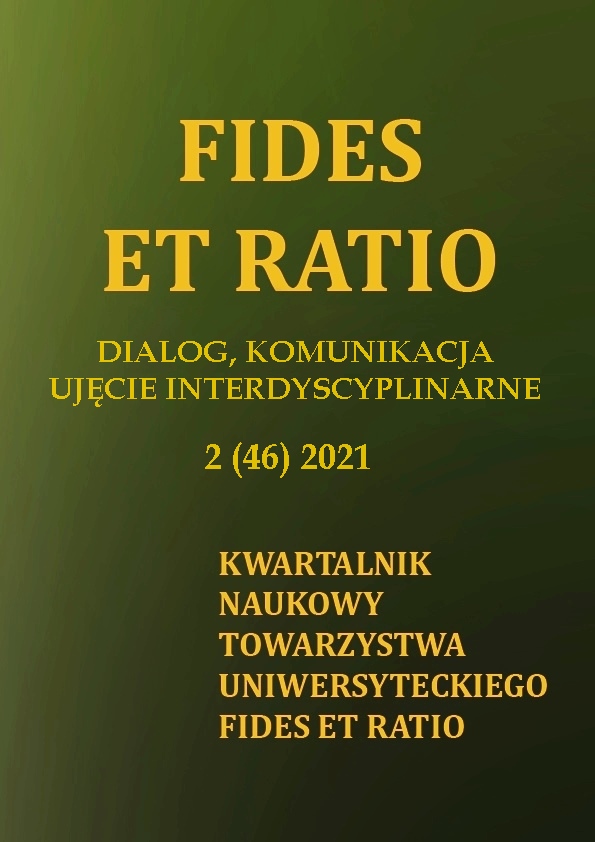Abstract
The aim of the study was to determine the relationships between the dimensions of the quality of the interpersonal relationship of siblings in early adulthood and opinions about the social world, and to check whether there are relational predictors of these opinions.
The participants of the study were 180 people (including 48.9% women) who were in early adulthood (M = 24.73; SD = 4.54), who came from complete families with adult siblings.
The following research tools were used: the Adult Relationship Questionnaire (Walęcka-Matyja, 2014), the STQ-Now Questionnaire (Szymańska, 2016), the Social Opinion Questionnaire (Różycka, Wojciszke 2010) and a questionnaire.
The obtained results indicate the existence of numerous, although mostly weak and moderate, relationships in the expected directions between all dimensions of the interpersonal relationship of siblings (except for Competition) and opinions about the social world. Relational predictors of beliefs about the social world were also determined. It was found that sibling relationships in which there is high conflict, intense competition and indifference negatively affect the experience of satisfaction with social exchange, the level of self-esteem and trust in interpersonal contacts. Additionally, the negative aspects of the relationship of adult siblings (Conflict, Indifference) foster the belief that the world is a game in which you have to be ready to constantly fight with others. In turn, friendly relations between siblings (Warmth, Mutuality) and those with an element of struggle for power in the relationship (Domination) contributed to an increase in the level of self-esteem.
References
Borawski, D. (2017). Samoocena i przekonania na temat świata społecznego jako predyktory przebaczania. Polskie Forum Psychologiczne, 22, 351–370.
Borecka-Biernat, D., Walęcka-Matyja, K., Wajszczyk, K. (2019). Rozwiązywanie sytuacji konfliktowych. Wybrane problemy. Warszawa: Wyd. Difin.
Braun-Gałkowska, M. (2010). Dialog w rodzinie. Pedagogia Christiana, 1(25), 161–173.
Capodieci, S. (2006). Rodzeństwo – Jaś i Małgosia czy Kain i Abel. Warszawa: Instytut Wydawczniczy Pax.
Cicirelli, V. G. (1995). Sibling relationships across the life span. New York: Plenum.
Cicirelli, V.G. (1991). Sibling relationships in adulthood. Marriage and Family Review, 16, 291–310.
Czabała, J., Sęk, K. (2000). Pomoc psychologiczna. W: J. Strelau (red.), Psychologia.
Podręcznik akademicki – Jednostka w społeczeństwie i elementy psychologii stosowanej (s. 605–621). Gdańsk: GWP.
Derbis, R., Wirga, T. (2009). Rodzaj wzbudzonych emocji a zaufanie do ludzi i wiara w świat sprawiedliwy. Czasopismo Psychologiczne, 15(1), 7–21.
Dryll, E. (2013). Wrastanie w kulturę. Transmisja narracji w wychowaniu rodzinnym. Warszawa: Wydawnictwo ENETEIA Psychologii i Kultury
Farnicka, M., Liberska, H. (2014). Transmisja międzypokoleniowa - procesy zachodzące na styku pokoleń. W: I. Janicka, H. Liberska (red.), Psychologia rodziny (s. 185–198). Warszawa: Wydawnictwo Naukowe PWN.
Filist, E. (2012). Samoocena a postawy młodzieży wobec zjawiska alkoholizmu. Innowacje Psychologiczne, 1, 47–53.
Floyd, K. (2019). Affectionate communication in close relationships. Cambridge University Press.
Frydrychowicz, S. (2005). The influence of interpersonal communications on human development. Psychology of Language and Communication, 9, 2, 69–82.
Harwas–Napierała, B. (2014). Specyfika komunikacji interpersonalnej w rodzinie ujmowanej jako system. W: I. Janicka, H. Liberska (red.). Psychologia rodziny (47–72). Warszawa: Wyd. PWN.
Homans, G. (1992). Podstawowe procesy społeczne. W: M. Kempny, J. Szmatka (red.). Współczesne teorie wymiany społecznej. Zbiór tekstów (s. 173–229). Warszawa: PWN.
Janigová, E., Ferenčiková, Z. (2016). Rodzinne wzorce komunikacji w rodzinach pełnych. W: J. Kiryjow (red.). Komunikacja w rodzinie (42–52). Warszawa: Wyd. SGGW.
Leary, M.R., Tambor, E.S., Terdal, S.K, Downs, D.L. (1995). Self-esteem as an interpersonal monitor the sociometr hypothesis. Journal of Personality and Social Psychology, 68, 518–530.
Poraj, G., Poraj–Weder, M. (2018). Agresja pomiędzy rodzeństwie-ciemna strona socjalizacji w rodzinie. Psychologia Wychowawcza, 14, 155–172.
Reese-Weber, M., Kahn, J.H. (2005). Familial predictors of sibling and romantic-partner conflict resolution: Comparing late adolescents from intact and divorced families. Journal of Adolescence, 28, 479–493.
Rostowska, T. (2010). Psychospołeczne aspekty relacji interpersonalnych w podsystemie
rodzeństwa bliźniąt monozygotycznych. W: T. Rostowska, B. Pastwa-Wojciechowska (red.). Rozwój bliźniąt w ciągu życia. Aspekty biopsychologiczne (s. 101–122). Kraków: Impuls.
Rostowska, T. (2008). Małżeństwo, rodzina, praca a jakość życia. Kraków: Impuls.
Rostowska, T. (1996). Transmisja międzypokoleniowa w rodzinie w zakresie zachowań agresywnych. Przegląd Psychologiczny, 39, 177–186.
Różycka, J., Wojciszke, B. (2010). Skala Wiary w Grę o Sumie Zerowej. Studia Psychologiczne, 48, 33–44.
Satir, V. (2000). Terapia rodziny. Teoria i praktyka. Gdańsk: Wyd. GWP.
Satir, V. (1972). Peoplemaking. Robert S. Spitzer: Palo Alto.
Stańczak, M. (2020). Dialogowe rodziny – rozważania o komunikacji w rodzinie i postawach rodziców zdolnych dzieci. Kwartalnik Naukowy Fides et Ratio. Komunikacja i dialog. Ujęcie interdyscyplinarne, 42 (2), 124–134.
Szymańska, P. (2019). Uwarunkowania relacji z rodzeństwem we wczesnej dorosłości. Łódź: Wyd. UŁ.
Szymańska, P. (2016). An analysis of sibling relationship in adulthood: STQ - Now, Polish version. Archives of Psychiatry and Psychotherapy, 1, 55–64.
Tomasello, M. (2003). Constructing a language. A Usage-Based Theory of Language Acquisition. Cambridge, MA, London: Harvard University Press.
Volling, B.L. (2003). The Center for Child Well-being. Sibling relationships. W: M.H., Bornstein, L., Davidson, C.L.M. Keyes, K.A. Moore (red.). Well-being: Positive development across the life course (s. 383–406). Mahwah, NJ: Erlbaum.
Walęcka-Matyja, K. (2018). Relacje interpersonalne dorosłych rodzeństw w aspekcie funkcjonowania psychospołecznego i krytycznych wydarzeń życiowych. Łódź: Wydawnictwo Uniwersytetu Łódzkiego.
Walęcka-Matyja, K. (2016). The Polish short version of the Adult Sibling Relationship Questionnaire (ASRQ-SF): Preliminary Report. Hellenic Journal of Psychology, 13, 89–103.
Walęcka-Matyja, K. (2015). Relationships with siblings as a way of coping with stress in the early adulthood and the level of self-esteem. Polskie Forum Psychologiczne, 20, 285–304.
Watzlawick, P., Beavin, J., Jackson, D. (1967). Pragmatics of Human Comunication. A study of interactional patterns, pathologies, and paradoxes. New York: Norton.
